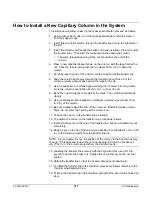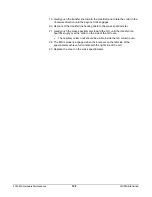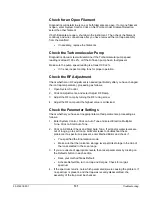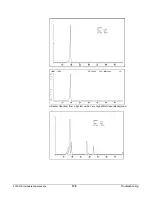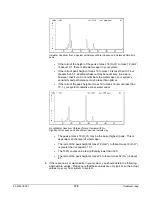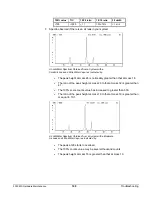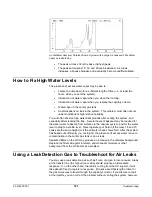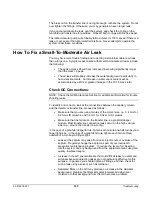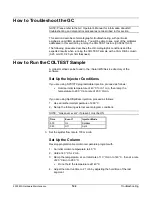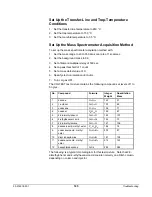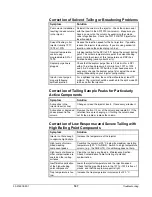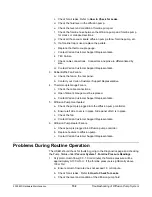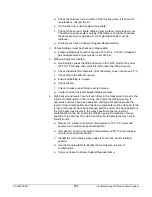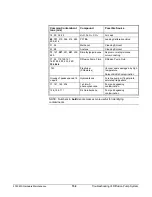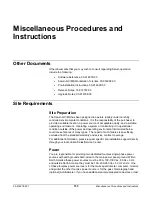
03-914978-00:1
141
Troubleshooting
An Air/Water Spectrum Obtained from a System with a Large Air Leak and Little Water
Vapor as Indicated by:
•
The peak at mass 32 is the base (highest) peak.
•
The peaks at masses 18, 19, and 28 are broadened. As a leak
increases, all peaks broaden and eventually become undifferentiated.
How to Fix High Water Levels
The presence of excess water vapor may be due to
•
Failure to pump down for a sufficient length of time (i.e., at least two
hours, when you vent the system).
•
Introduction of water vapor when you clean the ion trap.
•
Introduction of water vapor when you replace the capillary column.
•
Water vapor in the carrier gas tank.
•
An atmospheric air leak in the system. This problem most often occurs
under conditions of high relative humidity.
You will often observe high water backgrounds after venting the system, and
especially after cleaning the trap. Several hours of bakeout may be required for
the water vapor to desorb from surfaces in the vacuum system, and for the water
level to drop to a stable level. Never operate your Saturn if the mass 18 and 19
peaks are the same height (or if the air/water check shows NO). After the system
has baked out sufficiently (i.e. overnight), the presence of excess water is due to
contamination in the carrier gas tank or an air leak.
Saturated filters on the GC may produce an increase in the air/water background.
Replace the filters at regular intervals, and whenever moisture or other
background from the GC becomes a problem.
Using a Leak Detection Gas to Troubleshoot for Air Leaks
You may use a leak detection gas such as Freon or argon to locate leaks. A leak
at the transfer line (the high vacuum side) should produce an immediate
response. If, on the other hand, the leak is coming from the GC injector, it will
take about 90 sec to register a response. (It takes about that length of time for
the gas molecules to travel through the capillary column.) If you discover a leak
at the injector, you can correct the problem without venting the system; however,

